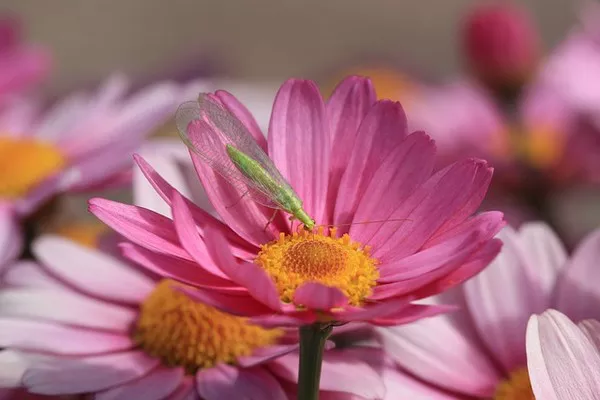The beauty of a flower has long captivated humans, drawing us closer to nature’s wonders. At the heart of this breathtaking marvel lies a mysterious and essential structure known as the “centre” or “disk.” The centre of a flower is a vital component that houses the reproductive organs and plays a crucial role in the plant’s life cycle. In this article, we delve into the intricacies of the centre of a flower, exploring its anatomy, functions, and significance in the world of plants.
Anatomy of the Flower Centre
The centre of a flower, also referred to as the floral disc or receptacle, is the region where the flower’s reproductive organs are situated. It forms the hub from which various floral parts radiate outward. The floral disc is not always uniform in shape or size and may vary among different plant species.
The key components found in the centre of a flower include:
a. Pistil (Carpel):
The pistil is the female reproductive organ of a flower and is typically located in the very centre. It consists of three parts: the stigma, the style, and the ovary. The stigma is the sticky, bulbous tip that serves to capture pollen. The style is a slender tube that connects the stigma to the ovary, which contains the ovules, the female gametes.
b. Stamen:
The stamen is the male reproductive organ of the flower and surrounds the pistil. It comprises two main parts: the anther and the filament. The anther is a sac-like structure at the tip of the filament that produces pollen, which carries the male gametes.
c. Nectarines (Nectaries):
Many flowers have nectar-producing structures known as nectarines located in the floral disc. Nectar attracts pollinators like bees, butterflies, and birds, facilitating the transfer of pollen between flowers and promoting cross-pollination.
d. Sepals and Petals:
Though sepals and petals are not part of the reproductive organs, they often radiate from the centre. Sepals are typically green and form the outermost protective layer of the flower bud. Petals, on the other hand, are usually colorful and attract pollinators.
The Role of the Centre in Reproduction
The centre of a flower plays a vital role in the reproductive process of flowering plants. Its reproductive organs facilitate both self-pollination and cross-pollination, ensuring the continuation of the plant species. The process involves the following steps:
a. Pollination:
Pollination is the transfer of pollen from the male reproductive organs (anther) to the female reproductive organs (stigma). This can occur within the same flower (self-pollination) or between different flowers of the same species (cross-pollination).
b. Self-Pollination:
In some plant species, the anthers and stigma are close together within the same flower, allowing for self-pollination. This mechanism ensures that the flower can produce seeds and fruits even without the aid of external pollinators.
c. Cross-Pollination:
Many plants rely on cross-pollination to achieve genetic diversity and increase their chances of survival. Cross-pollination occurs when pollen is transferred from the anthers of one flower to the stigma of another flower of the same species, typically aided by pollinators like bees, butterflies, or birds.
d. Fertilization:
After successful pollination, the pollen grain germinates on the stigma, producing a pollen tube that grows down the style to reach the ovary. The male gametes then travel through this tube to reach the ovules, where fertilization takes place, leading to the formation of seeds.
The Significance of the Centre in Plant Propagation
The centre of a flower is instrumental in plant propagation, contributing to the formation of new plants through seeds. Once fertilization occurs and seeds develop within the ovary, they mature and are released from the flower. Seeds contain the embryo of a new plant along with a food reserve to sustain the growing plant until it can establish itself and photosynthesize.
The Centre as a Source of Nutrition
Beyond its crucial role in reproduction, the centre of a flower also serves as a valuable source of nutrition for various organisms. Nectar, produced by nectarines in the floral disc, attracts pollinators like bees, butterflies, and birds. These animals feed on the nectar, inadvertently picking up pollen from the flower and transferring it to other flowers as they move from one bloom to another. This mutualistic relationship between flowers and pollinators is essential for both plant reproduction and the survival of pollinating species.
Variations in Floral Discs
The appearance and characteristics of the centre of a flower can vary significantly among different plant species. Some flowers have flat, wide floral discs, while others may have raised or concave shapes. Additionally, the size and arrangement of reproductive organs within the centre can differ, depending on the species’unique reproductive strategies.
Cultural and Symbolic Significance
Beyond its biological significance, the centre of a flower holds cultural and symbolic importance in various societies. Flowers have been admired and cherished by humans for centuries, often associated with beauty, love, and different emotions. The floral centre’s vibrant colors, alluring fragrance, and delicate structures have inspired art, literature, and cultural traditions worldwide.
Conclusion
The centre of a flower, often hidden within the captivating beauty of petals and sepals, holds a fascinating world of reproductive wonders. It houses the essential reproductive organs that ensure the continuity of plant species through the process of pollination, fertilization, and seed formation. Additionally, the floral disc serves as a source of sustenance for various pollinators, fostering a vital relationship between plants and animals in the ecosystem.
Beyond its scientific significance, the centre of a flower has captured the imagination of humanity for generations, finding a place in cultural symbolism, art, and expressions of emotion. As we continue to explore and appreciate the wonders of the natural world, the enigmatic centre of a flower remains a symbol of life, beauty, and the intricate interconnectedness of all living beings.


